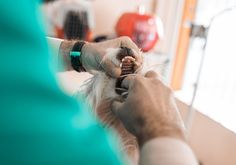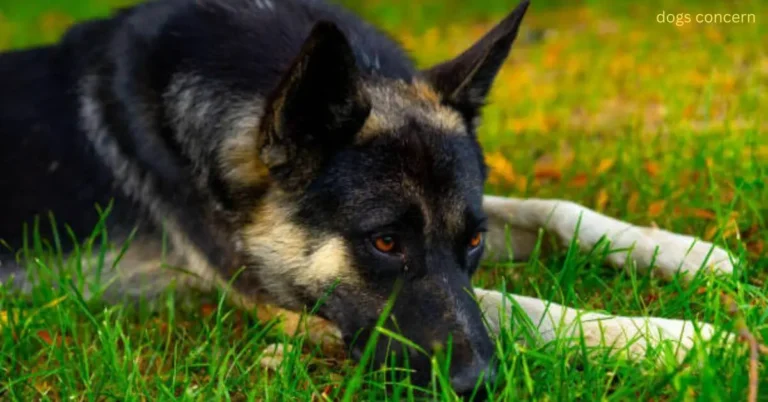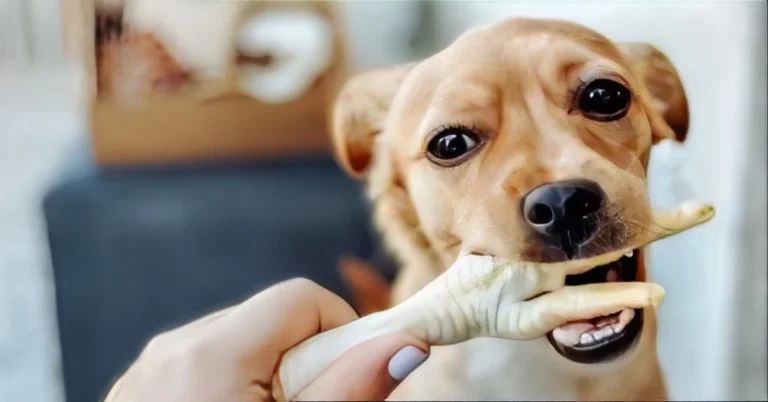Dog Heimlich: Heimlich Maneuver, Choking Sign, Prevention
The Dog Heimlich maneuver, a crucial life-saving technique, is designed to assist in cases where a dog is choking on an object that has become lodged in its throat or airway.
Just like in humans, dogs can accidentally ingest or inhale items that pose a choking hazard, leading to a life-threatening situation.
Generally, recognizing the signs of choking in dogs and being equipped with the knowledge of how to perform the Heimlich maneuver can make a significant difference in ensuring the immediate safety and well-being of our canine companions.
This technique involves specific actions tailored to a dog’s anatomy, emphasizing the importance of a quick and effective response to alleviate the obstruction and prevent further complications.
Understanding the fundamentals of the Dog Heimlich maneuver is an essential skill for any dog owner or caregiver, potentially turning a critical situation into a successful rescue.
Is My Dog Choking?

For every pet owner, knowing whether their dog is choking is an essential ability. Due to their inquisitive nature, dogs occasionally ingest things that might lodge in their throats and pose a serious risk to their lives.
Identifying your dog’s choking symptoms is the first step in providing quick and efficient assistance.
Heimlich Maneuver for Dogs
The Heimlich maneuver for dogs, also known as the abdominal thrusts, is a life-saving technique designed to dislodge objects obstructing a dog’s airway.
Obviously, choking can be a critical and time-sensitive situation, making it essential for pet owners to be familiar with this maneuver.

Here’s a step-by-step guide on how to perform the Heimlich maneuver for dogs:
Stay Calm
In any emergency, maintaining a calm demeanor is crucial. Your dog may already be distressed, and your composed attitude will help keep the situation under control.
Assess the Situation
Generally, determine if your dog is genuinely choking. Signs may include pawing at the mouth, difficulty breathing, coughing, or gasping for air.
Restrain Your Dog
Gently approach your dog and ensure they are in a standing position. If your dog is small, you can pick them up and cradle them in your arms.
Locate the Blockage
Check your dog’s mouth for any visible foreign objects. If you can easily remove the obstruction without endangering yourself, do so carefully. However, be cautious, as a panicked dog may bite unintentionally.
Perform the Heimlich Maneuver

For dogs with a complete blockage:
– Place your hands slightly below your dog’s rib cage while standing behind them.
– Grasp it with one hand while clen32ching it with the other.
– Perform quick, upward thrusts with a scooping motion, aiming to compress the abdomen.
Check the Mouth Again
After each thrust, recheck the mouth for dislodged objects. Be prepared to repeat the maneuver until the obstruction is expelled.
Seek Veterinary Assistance
Even if successful, it’s crucial to consult your veterinarian. Choking incidents can cause internal injuries, and professional evaluation ensures your dog’s well-being.
Remember, the Heimlich maneuver is not suitable for every situation. If your dog is unconscious, prioritize CPR.
Additionally, always contact your veterinarian promptly to discuss the incident and seek further guidance.
Being familiar with these life-saving techniques can make a significant difference in your ability to respond effectively during a choking emergency.
Heimlich Maneuver for Large Dogs
Performing the Heimlich maneuver on a large dog is crucial in a choking emergency. If your dog is conscious, stand behind them, place your hands just below the ribcage, and perform firm upward thrusts.

Repeat until the obstruction is dislodged. Check the mouth for any remaining objects, and seek immediate veterinary assistance. Stay calm, act swiftly, and remember, this life-saving technique can make a vital difference in your large dog’s well-being.
Heimlich Maneuver for Small Dogs
Executing the Heimlich maneuver on small dogs is essential when faced with a choking situation. If your small dog is conscious and choking, gently pick them up, place your hands just below the ribcage, and perform quick, upward thrusts.
Repeat until the obstruction is expelled. Carefully check the mouth for any remaining objects and promptly seek veterinary assistance.
Remain calm, take action quickly, and trust that knowing how to use this method will help protect your tiny dog’s health.
How to Proceed After You’ve stopped Your Dog from Choking
After successfully stopping your dog from choking, it’s crucial to take a few additional steps to ensure their well-being:
Monitor Breathing
Generally, observe your dog closely to ensure their breathing returns to normal. Check for any signs of distress or continued difficulty breathing.
Inspect the Mouth
Carefully examine your dog’s mouth and throat to ensure no residual objects are present. Be cautious, as a frightened or disoriented dog may inadvertently bite.
Offer Water
Generally, provide your dog with a small bowl of water to help soothe their throat. Ensure it’s at a comfortable temperature and easily accessible.
Contact Your Veterinarian
Even if the choking episode seems resolved, it’s crucial to consult your veterinarian. Choking can cause internal injuries or lead to secondary complications that may not be immediately apparent.
Stay Vigilant
For the following several hours, pay special attention to your dog. Look for any signs of distress, changes in behavior, or continued difficulty swallowing.
Certainly, immediate veterinary attention may be necessary if complications arise.
Pet First Aid Training
Certainly, consider enrolling in a pet first aid course to enhance your knowledge and preparedness for future emergencies.
Your capacity to respond successfully can be greatly impacted by having the appropriate abilities.
Remember, while your quick actions may have alleviated the immediate danger, professional veterinary care ensures a comprehensive assessment and addresses any underlying issues.
Staying informed, remaining vigilant, and seeking timely veterinary assistance contribute to your dog’s overall health and safety.
How to Prevent Future Choking in Dogs
Preventing future choking incidents in dogs involves proactive measures and attentive care. Here are essential steps to minimize the risk of choking for your canine companion:
Supervise Meals
Always supervise your dog during meals and treats. Don’t give them toys or food bits that are too big to swallow whole.
Use Appropriate Toys
Choose toys that are suitable for the size and breed of your dog. Avoid small toys or objects that can become choking hazards.
Avoid Certain Foods
Refrain from feeding your dog bones, especially small or brittle ones, as they can splinter and pose a choking risk. Be cautious with hard treats or toys that can break into sharp pieces.
Chew Responsibly
Choose safe, durable chew toys designed for your dog’s size and chewing habits. Regularly inspect toys for wear and replace them if they show signs of damage.
Training and Commands
Teach your dog basic commands like “drop it” or “leave it.” This training can be invaluable in preventing them from picking up and swallowing potentially harmful objects.
Secure Trash Bins
Since dogs are prone to dig through trash, keep tiny objects that might be ingested out of reach by using safe containers.
Dog-Proof Your Home
Conduct a thorough assessment of your living space to identify and eliminate potential hazards. Electrical cables, tiny objects, and other potentially swallowed materials should be kept out of reach.
Heimlich Maneuver Familiarity
Equip yourself with the knowledge of the Dog Heimlich Maneuver, as outlined in emergency response guidelines. In an emergency, being organized may make a big difference.
By incorporating these preventive measures into your daily routine and environment, you can significantly reduce the risk of choking incidents and create a safer living space for your cherished canine companion.
See also: Hip Dysplasia
Frequently Asked Questions
Examine the oral cavity
Does this appear to be bleeding? Is there something strange, such a stick or a piece of toy, in the throat or mouth? Your dog could let you try to remove the object if they are breathing and calmly choking. Just be very careful not to be bitten when doing this.
Reasons for Canine Swallowing Issues
Problems with swallowing can arise from physical obstacles, such as discomfort, or from weak, uncoordinated, or malfunctioning muscles.
Typical reasons include some of the following: inflammation brought on by reflux of the stomach. something foreign stuck in the esophagus or throat.
Put your arms over your dog’s shoulders and clasp your hands together at the base of their abdomen while they are standing.
Then, using your hands to create a fist, quickly and forcefully thrust five times up and forth, just like you would if you were performing the technique on a human. This move should remove the obstruction.
Generally, you should be able to get information regarding your dog’s follow-up treatment from your emergency veterinarian.
After a choking episode, you might need to give your pet some encouragement to rest for a few days or make sure she has access to lots of fresh water and soft food for a time.
Conclusion
In the final analysis, safeguard your dog from choking by mastering the Dog Heimlich Maneuver, taking proactive measures like proper supervision and toy selection, and pet-proofing your home.
Stay informed and consider enrolling in a pet first aid course for enhanced emergency response skills. Prioritize your dog’s safety with these valuable insights.






